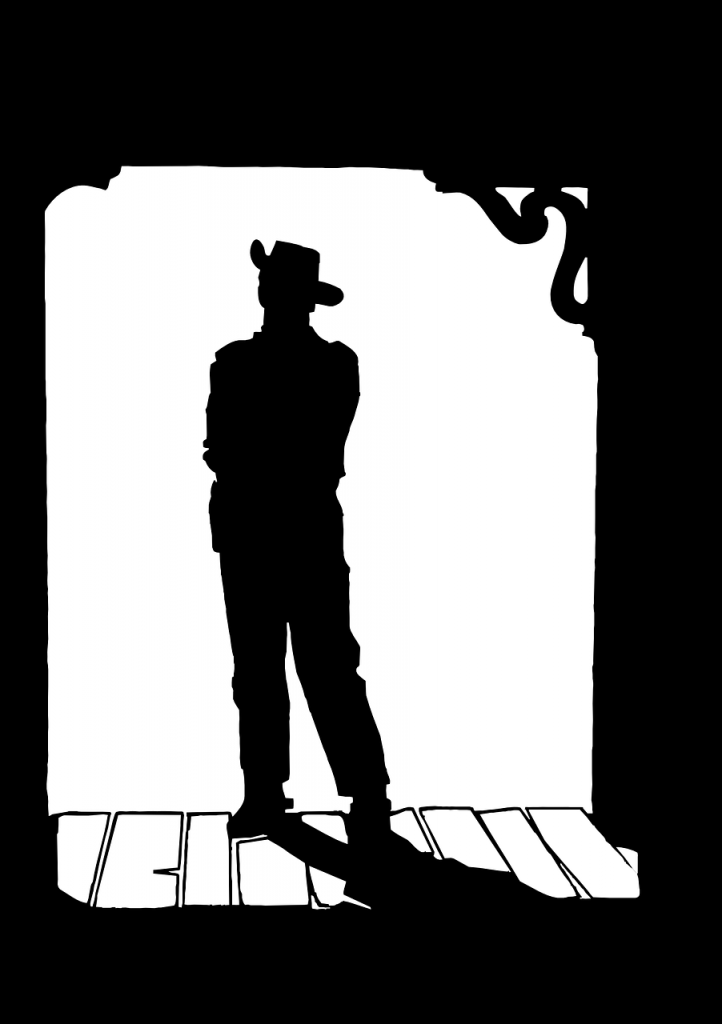When Western is a Noun Posted by Gary Locke on Sep 13, 2018 in Culture
“It’s Americana, it’s part of our history, the cowboy, the cattle drive, the sheriff, the fight for law, order, and justice.” Clayton Moore, the actor who portrayed The Lone Ranger, on Westerns.
Western is a word most commonly used as an adjective to describe either a direction or some characteristic representative of the US or Europe. It can also be a noun, describing a film, book, or television production set in the western US in the late 19th or early 20th century. It is a genre, a basic type of story with certain common elements such as gunslinging outlaws in frontier towns and brave, stoic lawmen. The Western is also one of the primary sources of popularly mythologized and romanticized views of the United States.
Early History of the Western
The American West first opened to expansion and settlement to the white population of the US shortly before the Civil War. It wasn’t until after the war, however, as people sought new opportunities and the lure of adventure, that the plains, prairies, and badlands of the west saw tremendous growth. Writers like E.Z.C. Judson, who wrote under the pseudonym Ned Buntline, wrote fanciful tales of outlaws and cowboys. Most of these were fictionalized stories of real people, such as Billy the Kid, Wyatt Earp, and Wild Bill Hickock. They were published in soft-bound book form called dime novels and were extremely popular. They capitalized on the imagination and dreams of people who were unhappy with daily life, and convinced many to seek the adventure of America west of the Mississippi.
As early as 1903, with a movie by Edwin S. Porter called The Great Train Robbery, filmmakers were creating Westerns. It was a 12-minute long film with almost no discernable plot apart from a train robbery, the formation of a posse, and the killing of all the bandits. Nevertheless, and despite most of it being shot in the backwoods of New Jersey, the movie was a sensation. Audiences and movie investors demanded more Westerns.
The Western Moves West
Hundreds of movies soon followed in quick succession. Early silent cowboy stars, who could ride and shoot simultaneously, became household names. Soon, directors were filming in western locations to lend authenticity. By the 1920s when Western pulp magazines, so-called for their cheap quality paper, were on every newsstand, the movies had bigger budgets. Epics such as director John Ford’s The Iron Horse, about the early days of the western railroad, became enormous box-office hits. The fourth film to win the Academy Award for Best Picture was a Western about the Oklahoma land rush, Cimarron, in 1931.
In many ways, Hollywood movie studios were established almost exclusively because of Westerns. In order to take advantage of the sprawling vistas of the American West, studios were built to be nearby the locations that the public wanted to see. Directors like John Ford, Raoul Walsh, and Howard Winchester Hawkes (yes, that was really his name) became synonymous with the Western, as did actors like John Wayne and Gene Autry.
Of course, the Western novel was still very popular. Many of the great films of the 30s and 40s were based on Westerns which had enjoyed bestseller status. The Ox-Bow Incident, about a posse bent on frontier justice, is both a classic film and a novel which is still required reading in schools throughout the US. Destry Rides Again, the classic Jimmy Stewart movie about a pacifist who restores peace to a rugged frontier town without using his guns, was based on a book by Western novelist Max Brand.
Radio and television Westerns kept pace with the success of Western movies and books. Some of TV’s most memorable shows, like Gunsmoke and Bonanza, can still be seen in reruns 50 years after they left the networks. The Lone Ranger first appeared as a radio show in 1933, eventually making a smooth transition to television in 1949, then to films in the mid-1950s. Clayton Moore, the original actor from the 1949 series, continued to play The Lone Ranger and make personal appearances as the character until his death in 1999!
It is said that Westerns have declined, and some have even said that the genre has died. Yet, movies like 2018’s The Sisters Brothers and Joel and Ethan Coen’s The Ballad of Buster Scruggs continue to draw popular and critical acclaim. Because they are emblematic of our culture and history, regardless of their authenticity, Westerns will always have a place in the heart of Americans.
Next week: The Five Westerns You Must See

Build vocabulary, practice pronunciation, and more with Transparent Language Online. Available anytime, anywhere, on any device.




